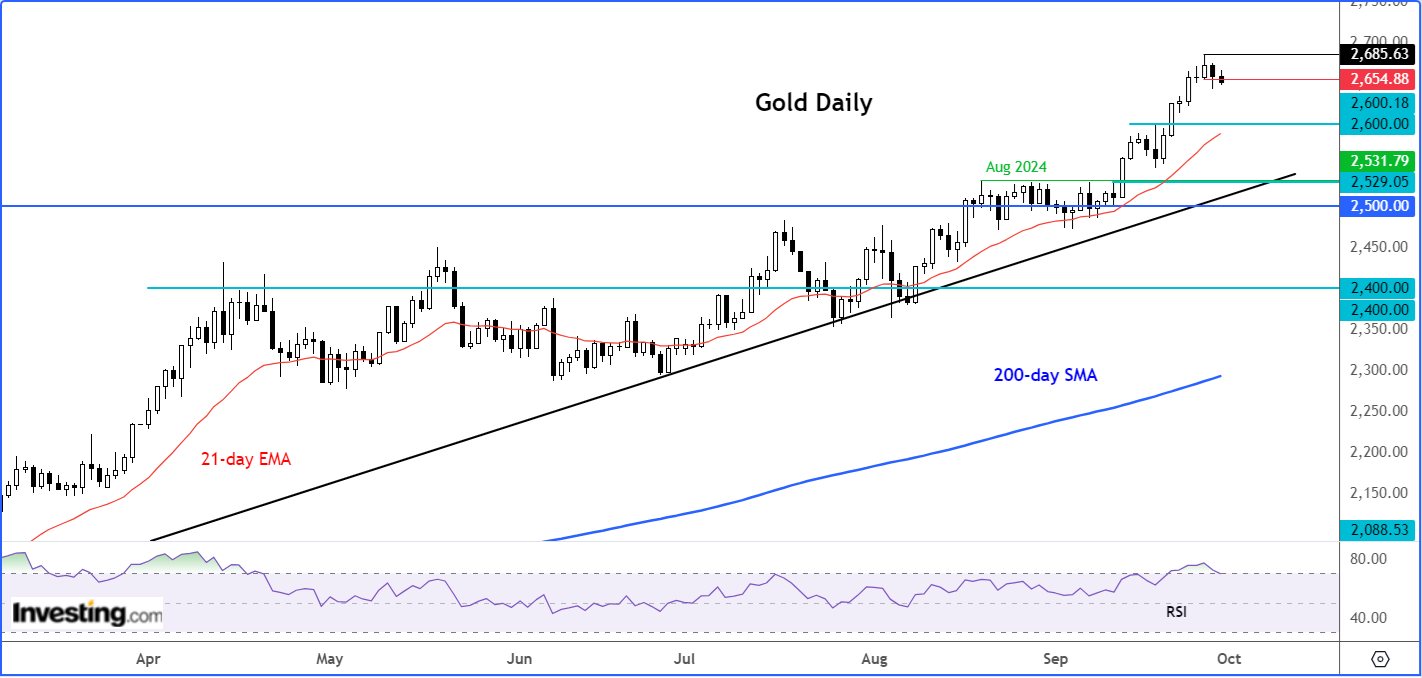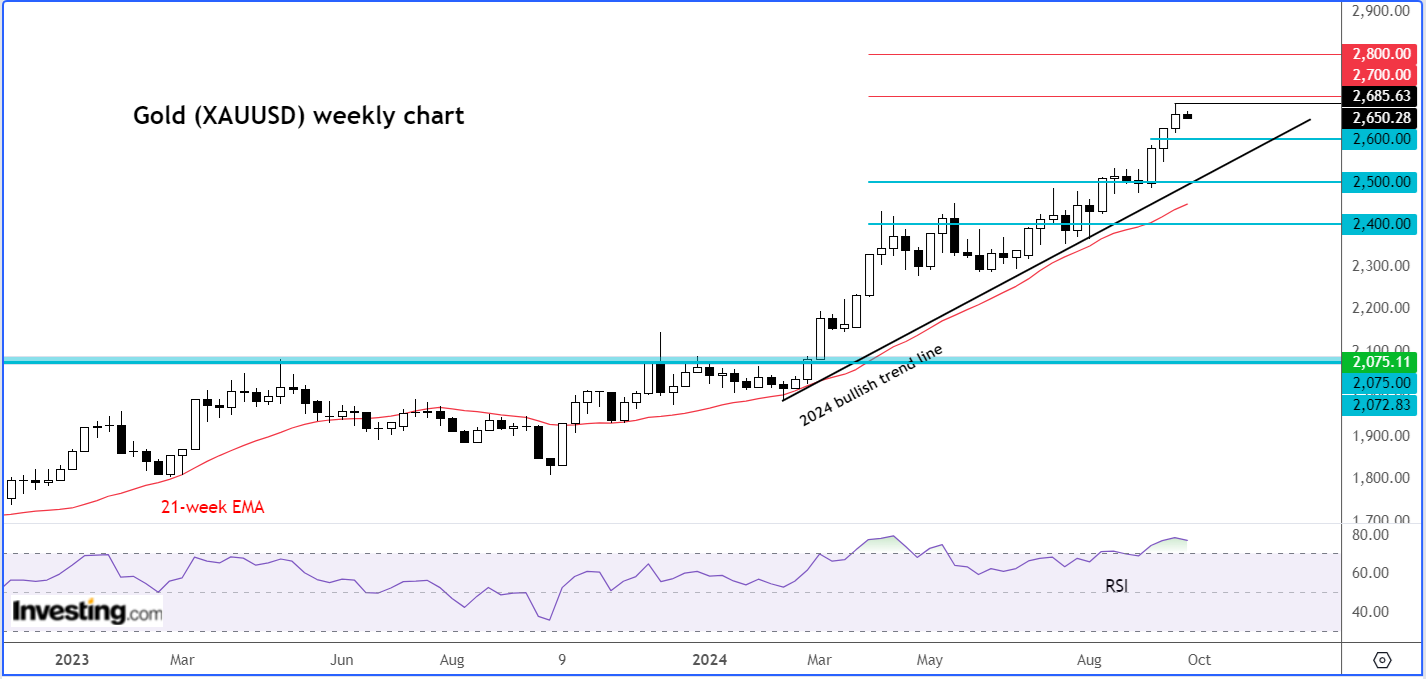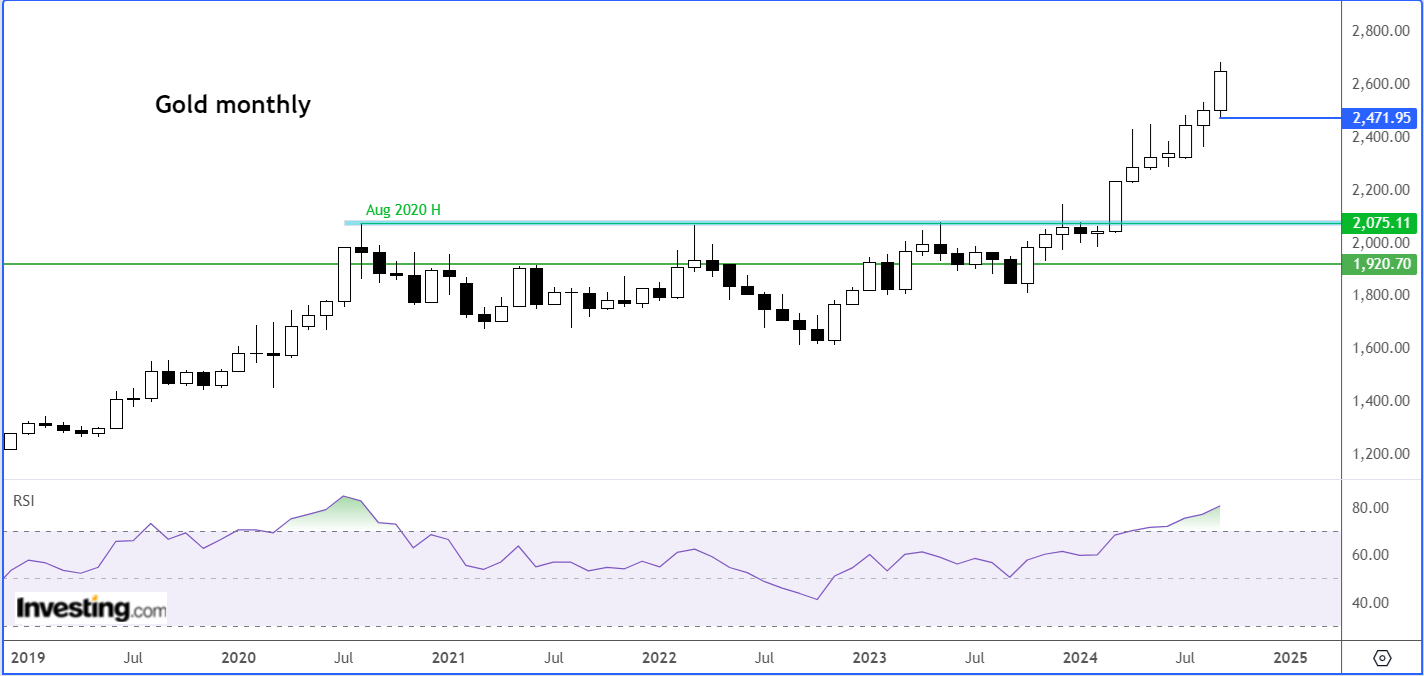- Middle East tensions gave gold a boost, but early losses suggest a shift.
- Overbought signals hint at possible profit-taking ahead.
- US employment data could decide gold's next move.
- Looking for actionable trade ideas to navigate the current market volatility? Unlock access to InvestingPro’s AI-selected stock winners for under $9 a month!
There was further escalation in the Middle East conflict at the weekend, leading to a stronger start for safe-haven gold after Friday’s softer close. But during the early European trade, the precious metal lost its early advance, turning lower alongside crude oil and major European indexes.
The latest developments come after a big risk-on trade last week, largely driven by China, where government stimulus efforts spurred a surge in stocks, commodities, and ComDolls. European indexes like the DAX also benefited, hitting new all-time highs alongside the S&P 500, with gold following suit. But with China now closed for the rest of the week, it is all up to US data and geopolitics to drive gold and other markets.
Profit-taking to take center stage now?
After hitting another record on Thursday, the yellow metal began to lose some momentum, potentially signaling a pause in the impressive rally. With the ongoing situation in the Middle East unable to provide gold any further lift, we could finally be on the verge of some profit-taking that could send the metal lower in the short term.
That doesn’t necessarily spell doom for gold’s longer-term bullish outlook—dip buyers are likely waiting in the wings, ready to seize any opportunity presented by short-term price weaknesses. Indeed, even with potential profit-taking on the horizon, my long-term bullish outlook on gold remains unchanged—a view I’ve held for years.
Gold might not hit the $3000 mark this year, but I believe it’s only a matter of time. With factors such as central banks cutting rates, geopolitical tensions, and ongoing central bank gold purchases, the environment remains favorable for continued strength in the yellow metal.
Overbought conditions on multiple time frames
In the near term, gold appears poised for some level of profit-taking. Historically, whenever the Relative Strength Index (RSI) surpasses the 70 mark on higher time frames, as it has now, we often see a period of consolidation or selling pressure to ease those overbought conditions.

It’s not just on the daily RSI that we’re seeing these signals—both the weekly and monthly RSI are showing extremes as well.

Significantly, gold’s monthly RSI is at levels we haven’t seen since the height of the pandemic in 2020.
While the RSI indicator might suggest a correction is due, it’s not an automatic sell signal. Gold remains in a solid uptrend, making it difficult to gauge how far it could rise before any significant pullback.
Still, it wouldn’t be surprising to see a brief dip or consolidation in the near future, after which gold could resume its climb. My longer-term target remains $3000, although, in the short term, $2700 seems like a more achievable goal now that the $2600 level has been breached.
Looking at support levels, the $2600 mark is the first key area to watch on the daily chart. If that gives way, we could see gold testing the $2530 region, with $2500 representing the next major level tied to this year’s bullish trend.
Whether or not gold prices will weaken in the short-term as I suspect will depend on key US employment indicators this week.
Key US data to watch this week
Among this week’s key US economic data, the JOLTs report on Tuesday could be the highlight. With the Federal Reserve’s focus shifting from inflation to employment, this report takes on extra importance. The Fed’s aggressive rate cut in September has already shown their concern over a weakening job market.
If the trend continues, it could increase the probability of another 50-basis-point rate cut in November, applying additional downward pressure on the dollar and support for gold and equity markets. Pay close attention to employment metrics in the ISM services and manufacturing PMIs for further clues.
But the highlight of the week is likely to be the non-farm payrolls report on Friday. However, with much of the rate expectations in the price, you do have to wonder how much of a further lift these figures will give to the market. So, on balance, I think the risks of a short-term pullback in gold prices are greater than we end up significantly higher on the week.
***
Disclaimer: This article is written for informational purposes only; it does not constitute a solicitation, offer, advice, counsel or recommendation to invest as such it is not intended to incentivize the purchase of assets in any way. I would like to remind you that any type of asset, is evaluated from multiple perspectives and is highly risky and therefore, any investment decision and the associated risk remains with the investor.
